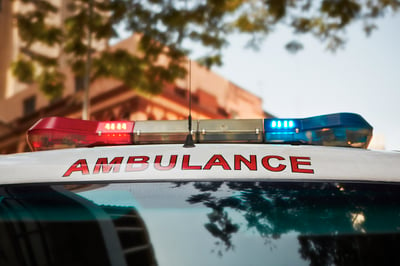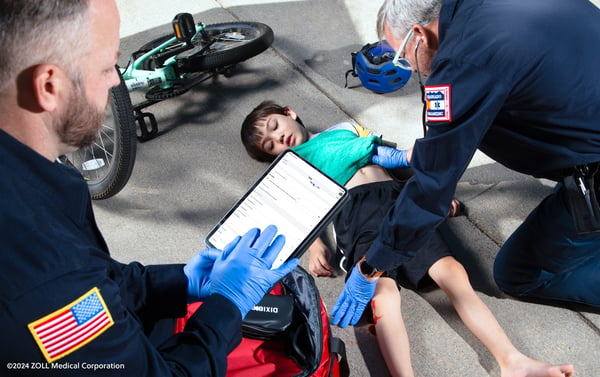Chart Smarter: Why One EMS Agency Ditched Paper for Mobile Tech
5 Timely EMS Billing Tips for Navigating 2021
(7 min read) Have you ever lost your glasses only to find them on top of your head? The habit of putting them there has become so routine, you have forgotten that there’s a reason you do it (to avoid losing them)
Was this information valuable?

(7 min read) Have you ever lost your glasses only to find them on top of your head? The habit of putting them there has become so routine, you have forgotten that there’s a reason you do it (to avoid losing them). Similarly, everyone has grown weary of the pandemic and become numb to our relentless routines. We have forgotten why some of the routines even exist and may not be sticking with the good ones as much as we should.
As I watch social media and review questions that come into our office, I see that some in the industry are questioning the routine elements of billing that they had previously relied upon for good reason. It is understandable, given the stress we face. This is a good time to revisit four important billing topics: 1) what defines the levels of service; 2) how to deal with forms needed for non-emergencies; 3) billing for patients who die before transport; and 4) determining who pays for inter-facility transports. These issues routinely occurred prior to and during the pandemic. They will continue to occur as we emerge from the pandemic. We will examine the issues, and I’ll point to information that supports good decision making.

Define Service Levels and Response Types Correctly
When in doubt, never underestimate the strength of the written word. Manuals and regulations can be friends when you are trying to make documentation or billing decisions. Occasionally, we all need a refresher about which guidance to follow. A good go-to page is the Code of Federal Regulations for the Ambulance Fee Schedule. This Centers for Medicare & Medicaid Services (CMS) website houses §414.605 Definitions, which defines the levels of service. Here is where the description of an Advanced life support (ALS) Assessment is described, as well as ALS1 Emergency and ALS2 and Specialty Care Transport. The definitions section of the Code of Federal Regulations discusses an important piece of information that many providers have been forced to question during the pandemic: What makes an emergency?
An emergency is based upon emergency response. According to the definitions, “Emergency response means responding immediately at the BLS or ALS1 level of service to a 911 call or the equivalent in areas without a 911 call system. An immediate response is one in which the ambulance supplier begins as quickly as possible to take the steps necessary to respond to the call.”

Many services are staffed with ALS personnel for transports. Regardless of how the ambulance is staffed, the way the ambulance is dispatched lays the groundwork for whether a call is ALS or BLS in nature. This is particularly true when a call is dispatched for an ALS-level condition, but upon arrival, the crew finds the patient has a BLS-level problem. Crews were dispatched based on the issue that was reported by the caller requesting service. If the ambulance was dispatched ALS for an ALS-level condition and the ALS crew performs an ALS assessment which is documented, then the call is billable at the ALS1 Emergency level. No ALS interventions need to be performed to qualify for this level of reimbursement if there is an ALS-level response for a reported ALS-level condition. In other words, the definition of ALS assessment must be met to qualify for ALS1 Emergency reimbursement based only on the performance of the ALS assessment.
So much of what determines emergency billing is tied to how the ambulance was dispatched. Dispatch may be done through a 911 call center or internally. Both are acceptable, but the internal emergency dispatch must be consistent with regulations. The regulations for emergency service build upon each other. Reviewing the §414.605 Definitions is helpful to billers who must determine the best approach to billing emergency services.
Provide Non-emergency Support Documents
During the pandemic, providers have had to render some services that are different than what they usually do in normal circumstances. Become familiar with additional support documents that may be required for non-emergency services. §410.40 Coverage of Ambulance Services is a good source of information for things like when a Physician Certification Statement (PCS) is required or how to use certified mailing if a PCS could not be obtained for a routine, scheduled or unscheduled non-emergency transport.
Common questions about regulations that may have been changed or temporarily waived during the pandemic and related forms can be answered by referring to the Coronavirus Disease 2019 (COVID-19) Provider Burden Relief Frequently Asked Questions. First published last spring and updated in July 2020, this frequently asked questions (FAQ) publication addresses signature and PCS requirements. A word of caution: be mindful of the temporary nature of these changes. Closely monitor the CMS and your local Medicare contractor for updates.

Code Patient Death Appropriately Before Billing
A common event is the EMS call to a presumably live patient (man down, sick person, unresponsive, etc.). Upon arrival, the dispatched crew finds that the patient has already died and does not transport. Similarly, a crew is dispatched to an unresponsive or cardiac arrest patient, and their efforts to revive the patient are unsuccessful. In each of these circumstances, the provider can bill for service by applying a special billing modifier. See "Section 10.2.6 Effect of Beneficiary Death on Medicare Payment for Ground Ambulance Transports" in the Medicare Benefit Policy Manual, Chapter 10 - Ambulance Services ("The Policy Manual"). There is a helpful chart with information on when Medicare will reimburse for response to a patient who has died or dies during attempts to revive. Medicare uses a BLS billing code along with the special “QL” modifier. The BLS code will not work for all Medicaid plans or commercial insurers. In those cases, the A0998 code (treatment without transport) may be a better choice. Refer to your Medicaid billing manual for the best approach in your state.
Know the Rules for Facility Billing
There continues to be patient movement in and out of facilities. Patients still go for dialysis, they are discharged from the hospital to a skilled nursing facility, or they go hospital to hospital. The first rule of all documentation and billing is that medical necessity for ambulance must be met for a claim to be reimbursed by Medicare. As noted in "Section 10.2.1, Necessity for the Service" of the Policy Manual, “Medical necessity is established when the patient's condition is such that use of any other method of transportation is contraindicated. In any case in which some means of transportation other than an ambulance could be used without endangering the individual's health, whether or not such other transportation is actually available, no payment may be made for ambulance services. In all cases, the appropriate documentation must be kept on file…”
Nursing homes and hospitals are responsible to pay for certain services. Information on when to bill hospitals is available in "Section 10.3.3, Separately Payable Ambulance Transport Under Part B Versus Patient Transportation that is Covered Under a Packaged Institutional Service." Information on when to bill a nursing home for service is located in the Medicare Claims Processing Manual, Chapter 15 - Ambulance in "Section 30.2.2, SNF Billing."
Revisit regulations and the Medicare policy and processing manual websites often. Appropriate facility billing is an important aspect of compliance.
Last but Not Least
Finally, remember to use financial consultants like me, your vendors, your software company, your billing company, your suppliers – we are your SUPPORT services. We want you to thrive, we want you to make it through these trying times, and we are here for you. Often, we have resources or information at our fingertips that may be helpful and we can provide the support you need quickly. Working together, we will make it through to better days ahead.
Read More About EMS Billing Practice to Capture More Revenue
Guarding Against (More) Revenue Loss
Want to Receive the ZOLL Pulse Blog in Your Inbox? Subscribe.
Related Posts
The End of Delayed Documentation
4 Must-have Data Points for Dispatch-Billing Alignment and Maximum Reimbursement
ZOLL Pulse Blog
Subscribe to our blog and receive quality content that makes your job as an EMS & fire, hospital, or AR professional easier.
ZOLL Pulse Blog
Subscribe to our blog and receive quality content that makes your job as an EMS, fire, hospital, or AR professional easier.




